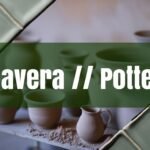Mexican pottery is more than just crafted clay; it’s a vibrant tapestry woven with centuries of tradition, regional identity, and artistic expression. From the sun-baked landscapes of Oaxaca to the bustling workshops of Puebla, the creation of Mexican pottery is a deeply rooted cultural practice, passed down through generations. This article explores the traditional methods of creating Mexican pottery, delving into the types of clay used, the shaping techniques, the decorative motifs, and the enduring cultural significance of this cherished art form.
The Foundation: Clay and its Preparation
The heart of any pottery lies in the clay, and Mexican pottery is no exception. What sets Mexican pottery apart is the use of local clays, each region boasting unique varieties that contribute to the distinctive character of its ceramics. Potters often dig up the clay themselves or source it from local suppliers, keeping the exact origin a closely guarded secret. Most clays in Mexico need temper to regulate water absorption, with one significant exception being the clay used in the Fine Orangeware of the Gulf Coast.
The type of temper used varies on location, from cattail fluff in Metepec, to sand in Acatlán or kapok in Ameyaltepec to give the clay the right consistency and it keep the final product from cracking. For instance, the iconic Barro Negro pottery of Oaxaca utilizes a naturally black clay found only in that region. The red clay, rich in iron oxides, is a hallmark of pottery from Michoacán and Guerrero. Authentic Talavera pottery from Puebla and surrounding areas relies on the unique quality of the local clay, a tradition dating back to the 16th century. The clay often comes in chunks, which must be dried and then crushed, using a rolling stone or flail. In some cases feldspar is used. The raw clay is dug with a pick and shovel in the rugged foothills outside the town. It is cleaned by soaking it in water until it can be poured through a sieve. The careful selection and preparation of clay is the first step in creating a piece of Mexican pottery. For more information, see this article on mastering clay storage and aging.
Shaping the Clay: Traditional Techniques
Once the clay is prepared, the shaping process begins. Mexican potters employ a variety of hand-building techniques, each with its own distinct character and history. Before the Spanish conquest, the potter’s wheel was unknown, except for a proto wheel used by the Zapotecs. Thus, pre-Hispanic wares were shaped by modeling, coiling or molding. Simple pinch pots or coiled pots were usually made by the family, with larger molded pieces made by craftsmen.
Coiling, one of the most ancient methods, involves rolling the clay into long, snake-like coils and then layering them one on top of the other to build up the walls of the vessel. Pre-Hispanic pottery was made by coiling the clay into consecutive circles up the sides, followed by scraping and molding the coiled work until the coils could no longer be detected. Molding is another common technique, where clay is pressed into or around a mold to create a desired form. The earliest molded pieces were simply clay pressed against a pre-existing bowl, but double molds and slip casting came to be used to make bowls with relief decorations. Sometimes vessels were made with several molded pieces with the upper part finished by coiling. The shapes of the pieces are obtained through two fundamental processes: the lathe and the molds. Using the technique of pastillage and with the clay with the consistency of a flexible masa dough, the pieces are shaped.
With the arrival of the Spanish, the potter’s wheel was introduced, revolutionizing the speed and efficiency of pottery production. Potters wheels are most commonly used in some workshops, and often to rapidly make a succession of small vessels. In many places, the wheel is powered by foot, using a kickwheel, rather than by electricity. The major effect on production was the introduction of the potter’s wheel, the enclosed kiln, lead glazes and new forms such as candlesticks and olive jars. All of the methods used in pre-Hispanic times, along with the potter’s wheel, are still used to make pieces. Regardless of the method used, the potter’s skill and intuition guide the clay, coaxing it into a form that is both functional and beautiful. For more information, see this article on mastering hand building pottery.
Decoration and Firing: The Final Touches
Decoration is where Mexican pottery truly comes alive, reflecting the rich cultural heritage and artistic sensibilities of each region. Before the Spanish, pieces were not glazed, but rather burnished and painted with colored fine clay slips. This slip often had mineral pigments added for color, which could be added before and/or after firing. Designs generally fall into four categories: geometric, realistic or naturalistic (generally stylized animals and people), symbolic and pictographic. Common designs often include floral, religious and animal motifs, as well as geometric shapes. Often these designs will be painted in bright colors such as cobalt blue, yellow, black, and orange.
Today, artisans from Xalitla, located in the state of Guerrero, paint impressive birds, flowers, and traditions with acrylics on clay pieces, hats, and amate paper. Motifs that are represented in the Talavera pieces are stunning and elaborate geometric designs and patterns, mostly inspired by Moorish and Chinese art, which give a refined and very beautiful appearance that is unique in this world.
Firing is the final step in the pottery-making process, transforming the fragile clay into a durable ceramic piece. Firing was done in an open fire or in a pit. Pots were fired in a heap placed on the ground or in a pit and covered with wood. Traditionally, pieces have been fired in wood-fueled kilns or simple in a pile with wood. The Hispanic wares were not glazed, but rather burnished and painted with coloured fine clay slips. The Spanish introduced the potters’ wheel and new glazing techniques, including Majolica. The major effect on production was the introduction of the potter’s wheel, the enclosed kiln, lead glazes and new forms such as candlesticks and olive jars. This is low-fire method as the temperatures achieved do not exceed 800 °C. After the first baking, the pieces are orange, like cooked clay: this state is known as jahuete (cooked sponge) or sancocho (fried stew).
To detail the surface of the cooked clay, artisans sand them until they lose roughness and imperfections and by sound they gage variations in thickness, cracks or bubbles, which would compromise their resistance to the second baking. High temperatures transform the colors of mineral paints by reacting with the enamel which provide an unrivaled, textured glazed finish. The pieces come out of the oven at 1150 ° and for a long time they crackle, “they sing”, as they gradually cool down. The firing process is a delicate balance of heat and time, requiring the potter’s expertise to achieve the desired result.
Mexican pottery is a living tradition, constantly evolving while remaining deeply connected to its roots. Contemporary artists are experimenting with new forms, designs, and techniques, while honoring the legacy of their ancestors. From the selection of clay to the final firing, each step in the process is infused with cultural meaning and artistic expression. Whether it’s the intricate designs of Talavera pottery or the earthy tones of Barro Negro, Mexican pottery offers a glimpse into the soul of Mexico, a testament to the enduring power of tradition and the boundless creativity of its people.





